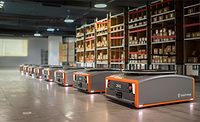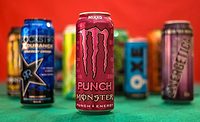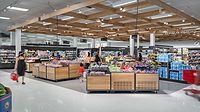In a race to compete with online retail, mass merchandisers are strategizing ways to boost their sales, by making shopping more convenient, streamlined and rewarding for consumers.
Accounting for 23 percent of the U.S. grocery market, mass merchandisers generate approximately $701.2 billion in sales in a year, according to New York-based Statista’s “U.S. Food Retail Industry – Statistics & Facts” report.
Experts note that larger-footprint stores such as Costco, Target and Walmart currently have an edge due to their capacity to carry a wider variety or products to meet consumer demand.
Kunal Ahuja, senior research manager for chemical, polymer and food domain at Selbyville, Del.-based Global Market Insights, notes that mass merchandisers are evolving to reach modern-day shoppers by increasing their focus on grocery and urban sprawl, and transforming traditional mass merchandisers into multi-faceted store formats.
For instance, Walmart has converted many of its mass merchandise stores to hypermarkets. Experts note that this format is just one of the strategies that mass merchandisers are employing in order to compete with eCommerce shopping trends.
“Mass merchandisers face increasing threat and challenges from online sales and eCommerce industries,” GMI’s Ahuja says. “Shifting consumer behavior on account of unfavorable demographic trends, as well as rise in internet retailing, have led to significant challenging situations for hypermarkets and mass merchandiser operators.”
Ahuja adds that the unprecedented conditions brought about by COVID-19 also are making this challenge more pronounced, which will lead mass merchandisers to prioritize efficiency gains over expansion in order to maintain profits, encouraging a focus on innovation and new concepts.
However, the conditions surrounding COVID-19 also could accelerate delivery and click-and-collect strategies from mass merchandisers as consumers have exhibited increased interest in paying more for these service to avoid leaving their cars or homes.
“Essential products now can be provided even at longer distances,” Ahuja says. “Home delivery and click-and-collect pick-up of beverages and other grocery items will stay in high demand for the foreseeable future, and partnership with online apps must be expanded.”
Ahuja also predicts that in the current industry climate, the beverages sector will demonstrate a spurt in demand for hot liquid products such as tea, coffee, milk, flavored beverages, alcohol and non-alcohol drinks, which so far have experienced a sharp rise in sales for the first two quarters of 2020.
“There also is an increase in demand for carbonated probiotic drinks that offer proven health benefits, including detoxifying capabilities, reducing cholesterol, improving blood pressure levels and promoting gut health,” Ahuja says. “Additional attributes include B vitamins often found in energy drinks, which promote energy, metabolism, cell proliferation and growth beneficial for hair, skin and nails.”
Convenience, location are key
Overall, experts predict the beverage industry is positioned to remain strong throughout the coming years. Gary Hemphill, managing director of research for New York-based Beverage Marketing Corporation (BMC), says that refreshment beverage volume sales were up 15.4 percent and dollars up 15.7 percent in the mass merchandiser channel for the 52 weeks ending in mid-June.
According to a May 2020 whitepaper titled “Grab-and-Go Single-Serve Beverage Merchandising at Retail,” Hollywood, Fla.-based retail environment trade association SHOP! states that non-alcohol drinks are estimated to incur the most sales with $324.8 million in anticipated 2020 U.S. revenue. Soft drinks, the largest sub-segment, make up $248.6 million in expected 2020 U.S. sales, while bottled water is next in line at $71.6 million.
According to the U.S. Beverage Market Outlook 2019 report, convenience is a key driver of segment growth, with single-serve, ready-to-drink (RTD) beverages gaining popularity with consumers who eat and drink on the move.
In fact, Statista’s “U.S. Food Retail Industry - Statistics & Facts” report states that the average annual food away-from-home expenditures for U.S. households is approximately $3,526, with each household making about 1.6 average weekly grocery shopping trips.
A recent Global Packaging market research study from The Association for Packaging and Processing Technologies revealed that customers tend to pick up grab-and-go foods and beverages impulsively, giving retailers with grab-and go programs an opportunity to increase their incremental sales in the beverage category.
SHOP!’s whitepaper reported that 68 percent of carbonated beverage impulse purchases were at mass merchandisers. When it comes to in-store shopping, experts note that retailers optimizing their store layouts and product displays to encourage purchasing are helping them capitalize on consumer impulse buys, especially those in the beverage category.
“Merchandising retailers will allocate more space to inexpensive and resilient categories, as well as items that align with new expected health priorities, including comfort, stress relief, natural immune support, hydration and sugar-reduction,” GMI’s Ahuja says.
According to Rich Wildrick, director of engineering at Wilkes-Barre, Pa.-based Trion Industries, stores can create impulse buying and cross-merchandising opportunities anywhere in the store, with floor-stands and gravity feed displays used for prompting last-minute impulse buys at checkout or within cross-merchandising situations.
“A carefully crafted soda floor stand would make a great companion to the salty-snacks aisle or as a mixer in the liquor aisle,” Wildrick notes. “The temporary nature of these types of displays is a key benefit as they can be changed out to accommodate different buying seasons (i.e., holiday, Super Bowl, summer) and different marketing campaigns.”
Wildrick also recommends that merchandisers place products where they stand out without being in the way, that they streamline and make restocking as easy as possible, and that they use well-designed displays to grab consumers’ attention.
“With great design, a clear understanding of display economics, and exceptional execution of all aspects of the display program, retailers and brands can maximize program results,” he says.
To beverage, and beyond
SHOP!’s whitepaper notes that sustainability mindfulness will come into play with beverage product offerings in the near future, stating that as U.S. consumers adopt the zero-waste mindset, mass merchandise retailers that are ahead of the game need to show consumers that they are doing their part to close the sustainability loop rather than contributing to the growing packaging problem.
“Companies working in the single-serve beverage arena will need to continually monitor the sustainability movement and work together to combat negative perceptions around the excessive waste produced by single-serve product packaging,” the report states.
GMI’s Ahuja says that other changes coming down the pipeline include business expansion through partnerships between retailers and their supply chain partners, which will prove essential to sustaining mass merchandising sales.
“Over-the-counter sales and pick-and-drop facilities should be provided for essential groceries,” he says. “Home deliveries also should be prioritized to avoid crowding at stores.”
With the right product mix, strategic point-of-sale methods and ongoing strategies to increase ease of both in-store and online/delivery purchase, experts predict mass merchandisers can maintain a firm foothold in the beverage category, and beyond.







